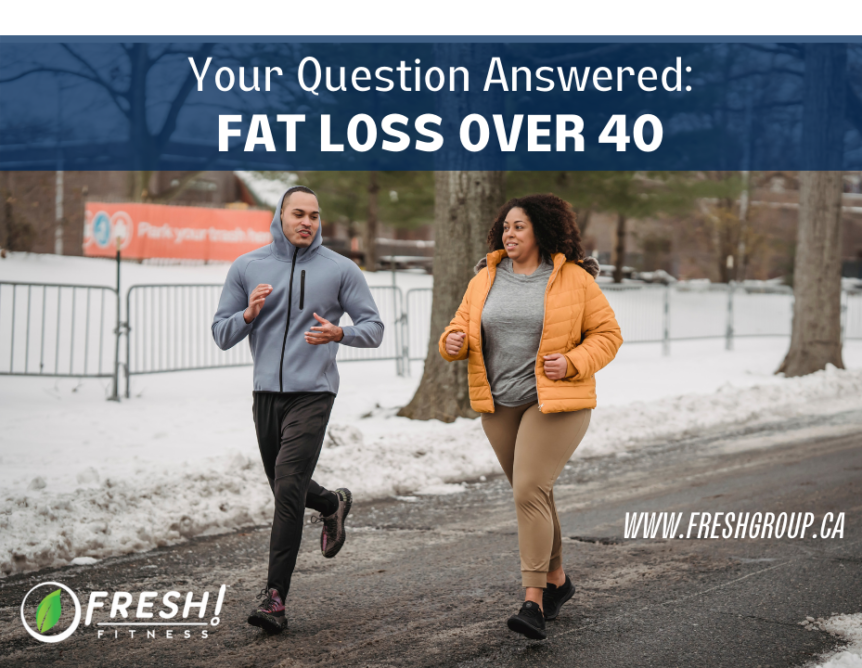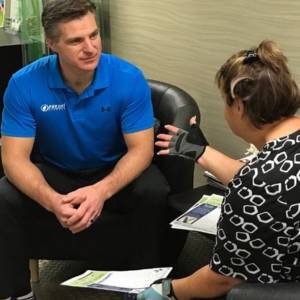Today’s post will be my answer to another reader question related to fat loss over 40. The question goes like this:
“Hey, Tim,
I’m curious whether there are any specific tips for women over 40 wanting to lose weight. I suspect the answer is to follow recommendations in your book (which makes sense!), but I’m curious whether there’s anything else.
Hope you’re well!”
K.
Here’s another related question…
“I’m in my mid-forties and am starting into peri-menopause. So my question would be around how to adjust exercise and diet to help address symptoms and mitigate weight gain? Specifically for exercise, what are the best exercises, what is a good exercise schedule, how do I support recovery from exercise days?
Ok, that may be a whole bunch of questions in support of the big question.
I.”
Let’s break these down into a few key points (my book content omissions, age, and gender/hormones)
First, we must chat about the missing secret chapter in The Fitness Curveball.
The biggest secret to fat loss was intentionally left out of my book to mess with people…Just joking!!
In reality, there are MANY aspects of health, fitness, fat loss, and personal performance that aren’t in my book. But, the most important foundational elements are there. The tips and strategies I included are what will get you 80% of the results with 20% of the effort.
If you are someone who’s already rocking all those areas, then yes, there are absolutely other options available. Options to fine-tune your fitness, fat loss (over 40), and performance. However, doing those things without the fundamentals will just confuse the situation and make it harder to get the results you desire.
Second, let’s address age.
Whether it’s 30, 40, 50, 60, or older, these milestones tend to get people thinking about their place in life and mortality. There are definitely physiological adaptations that happen as we age. These changes are extremely small when compared to the LIFESTYLE transformations we go through each decade.
It’s the combination of these changes that trick people into thinking they are just “getting older”. Many people tend to live into these aging stereotypes and create a self-fulfilling prophecy.
Yes, we naturally lose a bit of muscle mass each decade (approximately 1-2%). Our connective tissue (tendons, ligaments, fascia, etc.) becomes a bit less pliable and resilient. This is why in your 40’s you will take a little longer to warm up than in your 20’s, and you notice the physical impact of bumps, bruises, and injuries more acutely.
The great news is that regardless of your age, you can see phenomenal improvements. In fitness, fat loss (even a fat loss over 40), muscle strength, flexibility, power, endurance, and overall performance.

It just means you have to MOVE your body consistently and in line with your goals.
This is something that humans tend to do less as they age. The cumulative effects of lower activity levels accelerate as we age.
When coaching clients, we ask questions about when the weight gain started. Typically it comes with a change in life phase. For example going to university, moving away from home, getting married, having kids, starting a new job, losing a job, divorce, retirement, an injury that limits mobility/activity, medical diagnosis, etc.
In each of these instances, people move from an old routine to a new one. Their daily activities and schedule change. Typically physical activity is reduced, nutrition habits change, while stress levels and time commitments often increase.
The accumulation of these changes creates substantial momentum. Especially in the direction of weight gain, muscle decreases and has a negative metabolic impact.
However, the change is slow and sneaky. One, five, 10 years later, people often “wake up” and realize they are overweight, out of shape, and not sure how they got there.
This ALL comes back to the habits we have and actions we take each day.
YOU are in control of your actions and outcomes.
Finally, let’s dive into the gender aspect.
There’s no doubt that women are different than men in many ways. Most notably is the hormone profile. This also changes as we age. And can accelerate the natural physiological changes of weight gain and muscle loss (sarcopenia).
With that being said, the fundamentals of human physiology still apply. The human body adapts to the stimuli we place on it each day. If that is consistent activity (cardiovascular, resistance training, mobility, etc.), we will get stronger, fitter, and healthier.
If our stimuli are mostly ocular input from Netflix and laptops, then we will adapt to better suit the couch potato life (whether we are male or female).
I can’t overstate the implications of inactivity. They cover the mental, physical, emotional, social, and medical spectrum.

Simply moving your body EVERY DAY in a PROGRESSIVE manner will spark changes that will astound you.
Almost ALL of the age-related deficits you will read about can be mediated if not completely reversed by a smartly applied mental and physical activity regimen. In fact, physical activity has been repeatedly demonstrated to reduce the cognitive decline typically associated with advanced aging.
If not for your body, then do it for your brain!
This also applies to menopause, perimenopause, etc. While hormone changes can make progress more slow or frustrating, the principles still apply.
Here’s a simple framework for success.
Learn to MOVE WELL
Do something active DAILY
Do activities you ENJOY
Add some VARIETY
Set progressive GOALS
TRACK your progress
Make your movement SOCIAL when possible
Get HELP when you feel stuck or to help you progress FASTER
Nothing complicated. The work just needs to be done!
When you are ready to get help living your healthier, happier, fitter life, make sure to check out our carefully designed Courses Collection.



